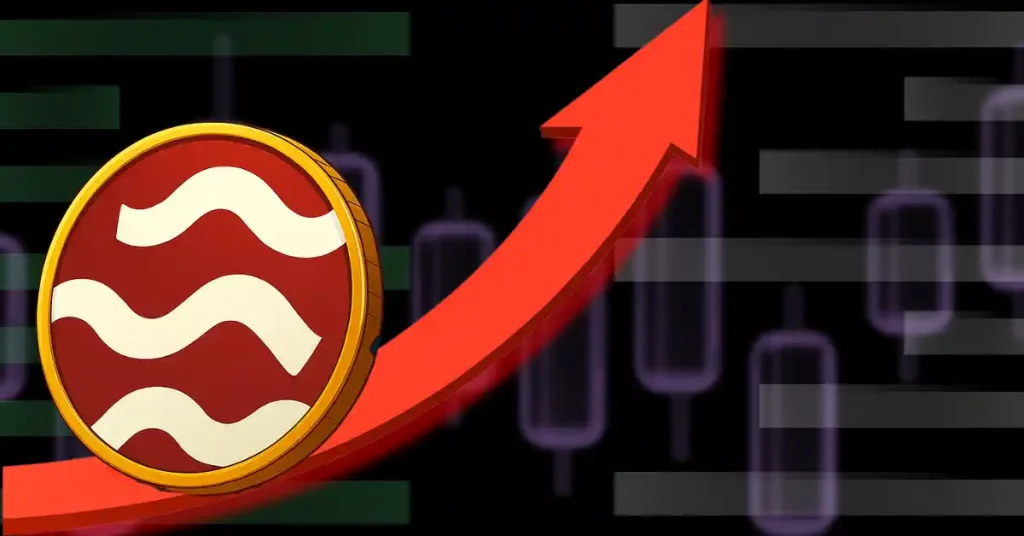
2022 was a chaotic year in crypto, with the collapse of FTX stealing the headlines. But there were also other developments beyond collapsing prices and fallen CEOs.
We interviewed the Head of Strategy and Innovation at Celo, Nikhil Raghuveera, on one such development. Celo is a top 100 cryptocurrency with its unique factor being that it focuses on smartphone users.
In November, Celo partnered with T-Mobile and Deutsche Telekom via the third annual T Challenge, which is a program that focuses on web3 development in conjunction with 5G technology.
With the world dominated by smartphones, and cryptocurrency still such a novel asset, we sat down with Raghuveera in December to ask him some questions on what this all means, as well as chatting about Celo’s claim to be carbon negative, and what the future of the web3 space may look like.
Invezz (IZ): Can you explain what exactly the T Challenge is, and how Celo fit in?
Nikhil Raghuveera (NR): The T Challenge is Deutsche Telekom (DT) and T-Mobile’s idea incubation program designed to accelerate the development of web3 telecommunication solutions using 5G technology.
Participants’ focus areas are across five key categories: sustainability, network and infrastructure, media, entertainment and experiential, customer engagement and loyalty, and decentralized IDs & wallets. The T Challenge’s goal is to give teams the opportunity to come to mass market territory, bringing their projects from the niche blockchain industry to mainstream users.
As DT and T-Mobile serve about 240 million mobile users worldwide, their go-to-market expertise is a great benefit to the projects in the incubator and the adoption of blockchain technology generally.
As a key partner in the accelerator, Celo is providing participants with expertise and support, with a particular focus on supporting sustainability efforts. Having launched on mainnet Earth Day 2020 with sustainability at the forefront of our work, we are excited to work with projects to empower their work using web3 and 5G technologies for positive impact.
DT first invested in Celo and began operating as node validators for the network in 2021, as Celo’s mobile-first approach to using cell phone numbers as wallet addresses especially resonated with DT’s web3 team. DT also joined Celo’s Alliance for Prosperity and Celo’s role in the T Challenge is a natural extension of that partnership.
IZ: Do you think initiatives such as T Challenge will be negatively impacted as a result of the reputation hit crypto has taken from the FTX debacle?
NR: This is actually a time in which we see more real-world oriented projects. Since opening applications in November, there have been more than 100 applications from startups looking to participate in T Challenge.
Efforts such as these illustrate how crypto can be leveraged for good with transformative impact for the climate and un- and under-banked communities around the world, and are more important now than ever as we work to rebuild trust in the industry.
IZ: Can you explain how Celo is carbon-negative?
NR: Celo has been offsetting transactions at the protocol level since launching on mainnet Earth Day 2020. To date, 3,500+ tonnes of CO2 have been offset. Through the Carbon Offsetting Fund, a transfer is made for every epoch to carbon-offsetting projects.
Additionally, the Celo Foundation works closely with the Climate Collective, an expanding coalition of organizations collaboratively building at the intersection of web3 and climate action. Together, we aim to garner broader mainstream attention and educate people on how web3 can be used as a mass-coordination tool to accelerate positive solutions that combat the climate crisis, the mass-coordination problem of our time.
IZ: Celo intrigues me given it tries to make cryptocurrency more “accessible”, with things like replacing a public key with a phone number. Are you targeting certain geographical regions above others, who may have less access to banking but more access to smartphones? If so, what kind of regions are these?
NR: Celo’s mission is to create the conditions for prosperity––for everyone. However as many of the 1.4 billion underbanked individuals are in emerging markets, there are certainly regions in which these efforts are more immediately impactful. For example, through our partnership with CARE USA as the global poverty-focused organization’s Latin America blockchain partner, we’ve seen the immediate benefits of blockchain-powered aid delivery, as it provides quicker payment finality and eliminates the high operating costs for cross-border transfers and payments.
IZ: What are the biggest challenges Celo face in trying to break into the mainstream?
NR: This feels like a broader industry challenge, including a lack of education about how blockchain and crypto can be leveraged for good. There are also many misunderstandings surrounding the technology, such as the fundamental differences between proof-of-work versus proof-of-stake consensus.
Efforts such as the Alliance for Prosperity, Climate Collective, and Connect the World, an initiative to support projects developing Celo on- and off-ramps, are crucial for eliminating these misconceptions. By bringing together leaders throughout the industry to leverage the transformative power of blockchain, awareness of the benefits is raised while real action is taken.
IZ: What would stop bigger non-crypto apps like Revolut or Monzo creating similar features allowing users to easily create crypto wallets, giving users a gateway to the decentralised world?
NR: A significant pillar of blockchain and the community supporting its growth is the open-source nature of the technology. Any and all entities interested in exploring how they can leverage their expertise to develop solutions are highly encouraged and supported to do so. In fact, leaders such as Revolut or Monzo entering the space would be a positive driver of adoption, enriching the entire web3 ecosystem.
The post Interview with Celo, the carbon-negative cryptocurrency focused on smartphones appeared first on Invezz.















 English (US) ·
English (US) ·